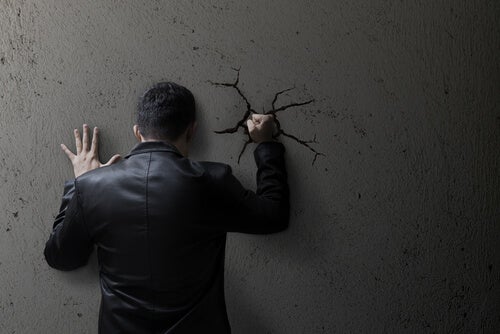Social morality is the degree to which people conform to the precepts of socially established morality, morality is the set of rules and values that people must follow, that is, in our day to day we will adapt to the different rules that we deem appropriate. live with the others.
As far as violent social morality is concerned, these are the rules that society believes must be respected in order to prevent such violence, if we look at what elements or agents are responsible for the generation of these violent acts, we will get a more or less precise response. in view of these moral considerations.
- This theory is a very good indicator of the degree of social morality in relation to violence.
- Part of the generic idea that people want to live in a just world.
- That is.
- We have to believe that everything is happening for some reason for our psychological tranquility.
Assuming that the various crimes are the product of bad luck and bad luck, that means assuming that we could also be victims. A disturbing journey that causes discomfort. On the contrary, if this assignment is given to others (for example, they were stolen because they crossed a dangerous area), it makes us think that we are less likely to experience a violent event (for example, if we do not cross danger areas, it will not happen with us).
This perception is based on cognitive distortion. It is a symbolic elaboration of social cognitions, the premises are:
As we have said throughout the article, there are accepted values or views in society. However, there are also other types of “clandestine” values. Why are they called that? Well, the idea is simple: these are the values that many people follow, but they are not externalized in the same way because they conflict with those who are most accepted.
This idea was originally created by Skyes and Matza, incorporated into their theory of neutralization, generally the same criminals use these techniques to mitigate the consequences of their actions, however, there are people who also use some of these techniques to give their opinion on the facts. that happened, legitimizes or justifies the perpetrator (the one who committed the crime).
These techniques are
Everything we explain is reflected in countless real examples where the person who suffered the crime is guilty and responsible for the crime, so we find plans to prevent sexual assault in which different guidelines are established that potential victims must follow. , the person’s way of life is conditioned and, indirectly, it is said that it is the way of life or choices that cause such aggression.
We may also hear comments from people from different professions who attribute violent and antisocial acts, for example, to the way the victim is dressed or acted upon. Society considers it a crime, at least from a moral point of view, to be the very behavior of the person who has suffered the harm. If the victim’s behavior is perceived as bad, the aggressor’s behavior will be normalized (it will be seen as a logical consequence, if not morally).
The morale of the company is based on the good work of people: guidelines, rules and standards of behavior that must be followed. If they are not considered appropriate to the socially established, they are attributed as a cause of the violence generated. In short, these acts of violence are sometimes considered an inevitable consequence.

